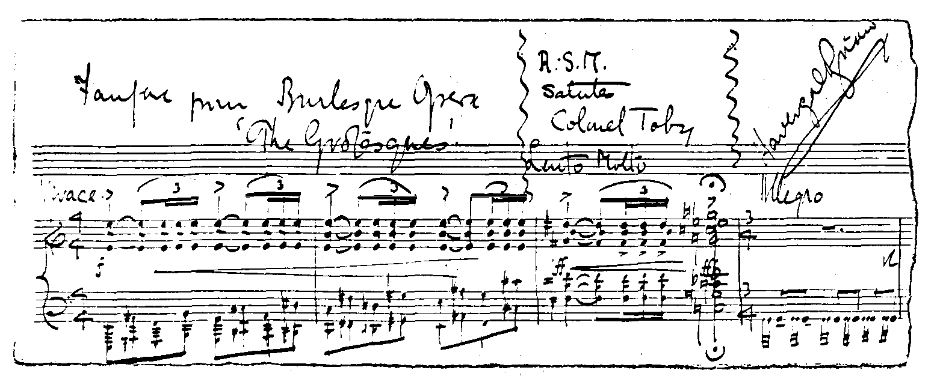The most minute of all Brian’s compositions - if we can even call it that - it nevertheless an item of some interest. It owes its existence to Leigh Henry’s little magazine Fanfare which ran for half-a-dozen issues in the years 1921-22. Described as a ‘musical causerie’, Fanfare was a stylish production, with some of the irreverence of the Twenties but with its critical head firmly screwed on: it took note of all the most progressive developments in music at the time, and it contains, among other things, the first really sensible evaluations of Schoenberg and Stravinsky published in this country. The editor, Leigh Henry was well versed in all aspects of contemporary music, and had a high opinion of Havergal Brian (on whom he wrote two important articles in the May & July 1922 issues of Musical Opinion). That Fanfare closed down for lack of support in January 1925 was, however, a sign of the times - of how much the Great War had broken the spirit of the English Musical Renaissance.
The magazine (a collector’s item nowadays) owed its name to its stimulating practice of commissioning tiny musical supplements from leading British and European composers: four per issue, on average, were asked to contribute a little fanfare. Thus were written such gems as Falla’s Fanfare pour une fete and Satie’s Sonnerie pour reveiller le bon gros Roi des Singes; British composers who contributed included Bax, Bliss, Bantock, Holbrooke, Ernest Bryson - and Havergal Brian. While most of them wrote complete pieces in full score, Brian simply produced a four-bar extract, in short score, from a major work which at that time remained in sketch - the opera we now know as The tigers. It appeared in Fanfare vol. 1, no. 5 (December 1921).
The fragment, which is all it is (though I have made a realisation for brass and percussion, should anybody want to perform it) is thus chiefly worth our attention for what it can tell us about the early stages of a work whose genesis is still somewhat mysterious. The original pencil sketch-score of The Tigers is lost. The present Fanfare corresponds to the last bar of p. 119 and the first three bars of p. 120 of the printed vocal score. But in bars 1-3 the dynamics and accentuation are different, and the right-hand part in bars 1-2 is at a different octave; while bar 4 (in 3/4 and suggesting a percussion pattern) is completely different from the purely melodic 4/4 allegro molto we find in the vocal score. Moreover the parent work is here designated a Burlesque Opera. Brian was later to say that it was not burlesque at all, and the vocal score in fact just calls it Opera) with the title The grotesques - which the piece in fact bore at least well into the 1920s. We don’t know exactly when the change was made; but it is fascinating to note, in the stage-direction above bar 3, that at least one character’s name got changed too. Colonel Sir John Stout, operatic history’s softest chocolate soldier, is here called Colonel Toby (like a Toby Jug, perhaps?).
Mere hints, musical and dramatic - but we could, if we wished, postulate a major revision of Brian’s first opera between 1921 and its publication in 1932 on the strength of them. Even about a major work like The tigers there is so much that we still don’t know. It remains to mention that on the small slip of manuscript paper on which Brian wrote his little Fanfare - which recently came to light in a bookseller’s catalogue - are the lowest three systems (violas, cellos, basses) of a page full score. The bars are empty, but they contain clefs and a key-signature of B flat or C minor. We possess no orchestral work by Brian of around this date that uses such a key-signature. So what is this, then? A scrap from the lost Tales of olden times? Part of a full score that Brian the copyist was making for some more fortunate composer? As always with Brian, each new piece of evidence for his creative life only raises further questions.
NL10 / March 1977 © Malcolm MacDonald
Newsletter, NL 10, 1977
